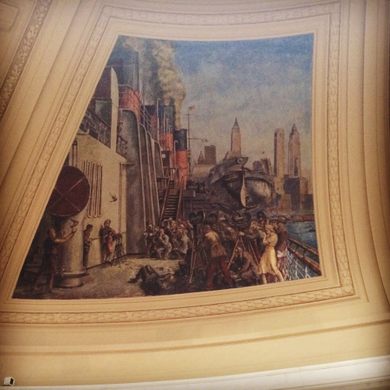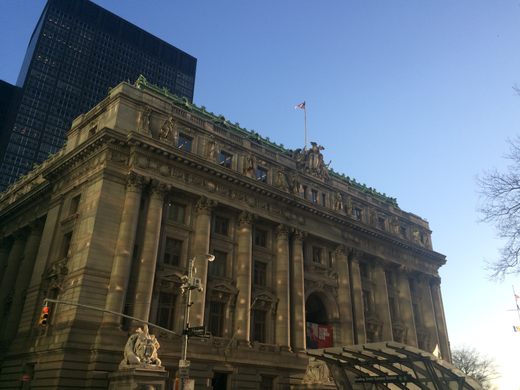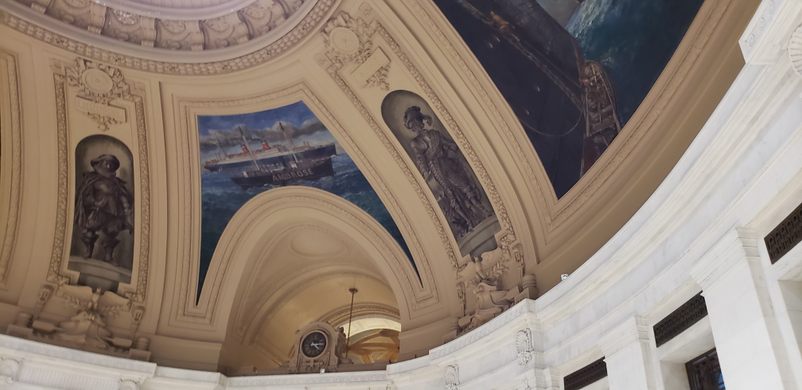WPA Murals of the Alexander Hamilton U.S. Custom House
Magnificent New Deal Murals evoke a time when New York City harbor was one of the world's greatest and busiest ports.
Bowling Green is one of downtown Manhattan’s busiest public thoroughfares. Whether making their way to embark for the Statue of Liberty and Ellis Island, or to have their photograph taken by Arturo Di Modica’s Charging Bull, or Kristin Visbal’s new addition, the bronze Fearless Girl, the park throngs with tourists and Financial District workers. The small Green itself, the oldest public park in New York City, is dominated by one the city’s most beautiful examples of Beaux Arts architecture, the Alexander Hamilton U.S. Custom House.
Currently home to the National Museum of the American Indian, a bankruptcy court, and the National Archives of New York, the opulent building receives little of the vast foot traffic passing through Bowling Green. Which is a pity, for inside is one of the most remarkable examples of the WPA murals born out of the Great Depression.
When Cass Gilbert completed the stunning U.S. Custom House in 1907, a few years before embarking on the Woolworth Building, New York was still principally a port city, one of the greatest and busiest in the world. Lower Manhattan was dominated by slips, piers, and docks. According to the GSA, the Custom House, “was a bustling place of activity as brokers and custom agents worked together building the wealth of this nation.”
One of the first buildings visible to ships sailing into New York Harbor from the Atlantic, the Custom House, named after Alexander Hamilton, was designed to be monumentally awe-inspiring. The U.S. Customs Service itself dated back to 1789, and is the oldest American Federal Agency, responsible for levying and collecting duties on the endless goods flowing into one of the world’s principal ports.
The grand nature of the Custom House and the business conducted inside was displayed in the vast central rotunda, with help from a series of murals, painted by New York artist Reginald Marsh, depicting daily life in the harbor. The eight vast murals were commissioned by the Treasury Relief Art Project as part of the New Deal, funded by the Works Progress Administration program.
Magnificent in scale, detail and execution, Marsh’s murals show the golden age of New York’s harbor: enormous steamliners dwarfing tugboats, automobiles being lowered onto docks, waterfronts bustling with stevedores, longshoremen, unending lines of immigrants, overshadowed by the dominating and ever-growing Manhattan skyline.
New York’s time as one of the greatest port cities in the world has long since passed, and the U.S. Custom House vacated the beautiful building overlooking Bowling Green for 6 World Trade Centre in 1973, where it was destroyed during the September 11th attacks. But visitors venturing inside the free museum, craning their necks upwards, will see a remarkable painted reminder of a vanished past.



















Follow us on Twitter to get the latest on the world's hidden wonders.
Like us on Facebook to get the latest on the world's hidden wonders.
Follow us on Twitter Like us on Facebook